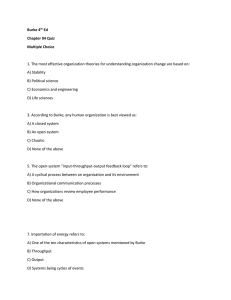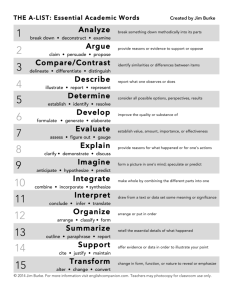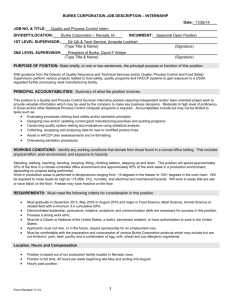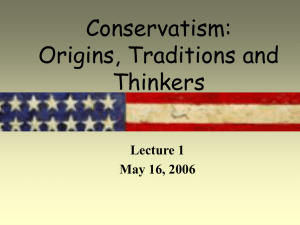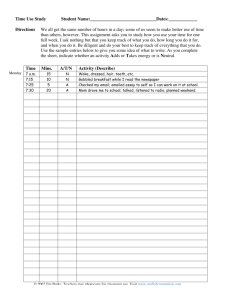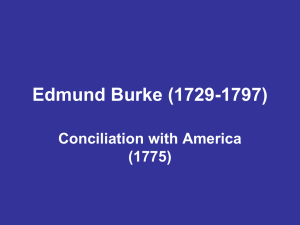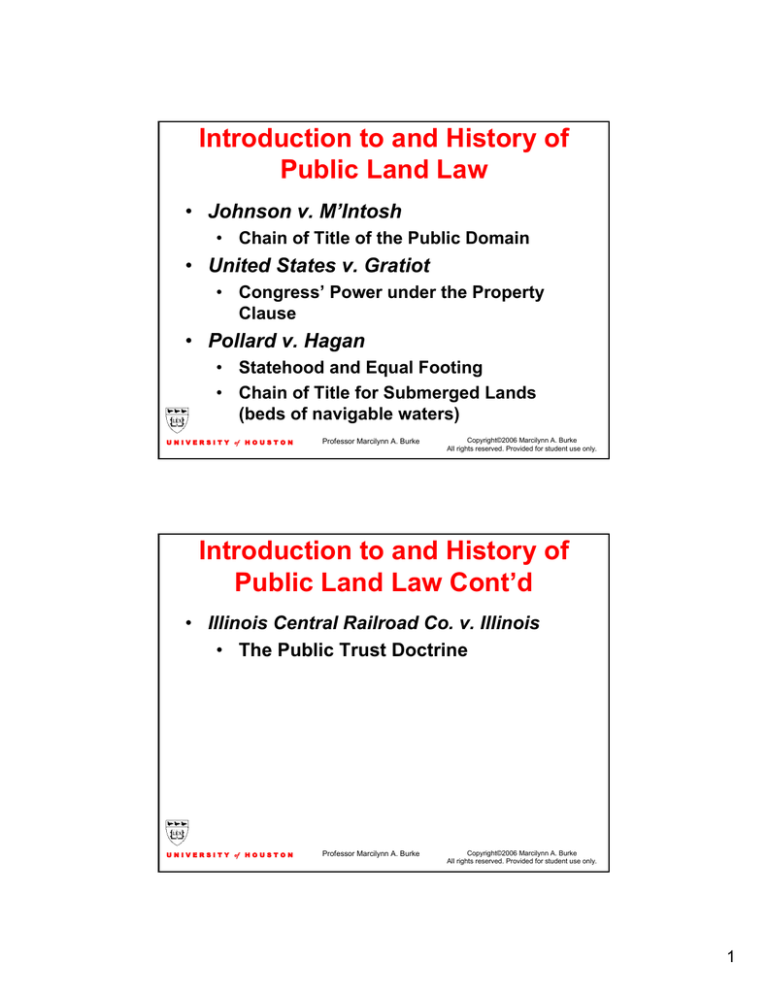
Introduction to and History of
Public Land Law
• Johnson v. M’Intosh
• Chain of Title of the Public Domain
• United States v. Gratiot
• Congress’ Power under the Property
Clause
• Pollard v. Hagan
• Statehood and Equal Footing
• Chain of Title for Submerged Lands
(beds of navigable waters)
U N I V E R S I T Y of H O U S T O N
Professor Marcilynn A. Burke
Copyright©2006 Marcilynn A. Burke
All rights reserved. Provided for student use only.
Introduction to and History of
Public Land Law Cont’d
• Illinois Central Railroad Co. v. Illinois
• The Public Trust Doctrine
U N I V E R S I T Y of H O U S T O N
Professor Marcilynn A. Burke
Copyright©2006 Marcilynn A. Burke
All rights reserved. Provided for student use only.
1
Johnson v. M’Intosh,
21 U.S. 543 (1823), p. 40.
Chain of Title of the Public Domain
What kind of title did the European
nations have?
What kind of title did the U.S. receive
from the European nations through
treaties?
What interests did Native Americans
have?
U N I V E R S I T Y of H O U S T O N
Professor Marcilynn A. Burke
Copyright©2006 Marcilynn A. Burke
All rights reserved. Provided for student use only.
Johnson v. M’Intosh cont’d
The Treaty of Guadalupe Hidalgo
February 2, 1848 signed by
President Polk’s representative
ended war between Mexico and
the United States.
Mexico ceded 55% of its territory
(present-day AZ, CA, NM, TX, and
parts of CO) in exchange for $15
million for war-related damage to
property.
U N I V E R S I T Y of H O U S T O N
Professor Marcilynn A. Burke
Copyright©2006 Marcilynn A. Burke
All rights reserved. Provided for student use only.
2
Johnson v. M’Intosh cont’d
The Treaty of Guadalupe Hidalgo
cont’d
Provided for protection of the
property and civil rights of Mexican
nationals living within the new
border (Art. VIII, IX).
Guaranteed protection of Mexican
land grants (Art. X) until the U.S.
Senate deleted it in the ratification of
the treaty in March 1848.
U N I V E R S I T Y of H O U S T O N
Professor Marcilynn A. Burke
Copyright©2006 Marcilynn A. Burke
All rights reserved. Provided for student use only.
United States v. Gratiot,
39 U.S. 536 (1840), p. 49.
The “Property Clause”
U.S. Const. art. IV, § 3, cl. 2
The Congress shall have Power to
dispose of and make all needful Rules and
Regulations respecting the Territory or
any other Property belonging to the
United States.
U N I V E R S I T Y of H O U S T O N
Professor Marcilynn A. Burke
Copyright©2006 Marcilynn A. Burke
All rights reserved. Provided for student use only.
3
United States v. Gratiot cont’d
Limits to the Property Clause?
• Read broadly.
• Temporally – law of 1807 limited the
President’s authority.
• Constitutionally – the First
Amendment.
U N I V E R S I T Y of H O U S T O N
Professor Marcilynn A. Burke
Copyright©2006 Marcilynn A. Burke
All rights reserved. Provided for student use only.
Pollard v. Hagan,
44 U.S. 212 (1845), p. 52.
Equal Footing Doctrine
It only applies to inland waters, not
waters offshore.
It only applies to waters that are
navigable at the moment of statehood.
The U.S. can “reserve” before
statehood beds of navigable water for
federal purposes.
U N I V E R S I T Y of H O U S T O N
Professor Marcilynn A. Burke
Copyright©2006 Marcilynn A. Burke
All rights reserved. Provided for student use only.
4
History of Public Land Cont’d
• Illinois Central Railroad Co. v.
Illinois
• The Public Trust Doctrine
• Andrus v. Utah
• Grants
• Stewart v. Penny
• Homesteads
U N I V E R S I T Y of H O U S T O N
Professor Marcilynn A. Burke
Copyright©2006 Marcilynn A. Burke
All rights reserved. Provided for student use only.
Illinois Central Railroad Co. v. Illinois,
146 U.S. 387 (1892), p. 58
Illinois Central Round House
1866
U N I V E R S I T Y of H O U S T O N
Age of Steam
Professor Marcilynn A. Burke
Copyright©2006 Marcilynn A. Burke
All rights reserved. Provided for student use only.
5
Illinois Central Railroad Co. v. Illinois,
146 U.S. 387 (1892), p. 58
What Does it Mean?!?!
•
Could the state revoke the grant?
•
Could the state make the grant?
•
Special sort of eminent domain?
U N I V E R S I T Y of H O U S T O N
Professor Marcilynn A. Burke
Copyright©2006 Marcilynn A. Burke
All rights reserved. Provided for student use only.
Illinois Central Railroad Co. v. Illinois
cont’d
What Does it Mean?!?!
•
Immense value and size?
•
Applying to federal land?
•
Retention of police power?
U N I V E R S I T Y of H O U S T O N
Professor Marcilynn A. Burke
Copyright©2006 Marcilynn A. Burke
All rights reserved. Provided for student use only.
6
The Public Trust Doctrine
Restraint on alienation by the
government
1. What assets are covered by the
doctrine?
2. To what uses can the assets be
put?
3. Who can alienate (convey) a public
trust asset and according to what
procedures?
U N I V E R S I T Y of H O U S T O N
Professor Marcilynn A. Burke
Copyright©2006 Marcilynn A. Burke
All rights reserved. Provided for student use only.
Public Trust Assets
1. Great bodies of water
2. Parklands, wetlands, and wildlife
(court additions/expansion of the
doctrine)
3. Air, water, and natural resources
(statutes and state constitutions)
Chicago around 1833
U N I V E R S I T Y of H O U S T O N
Professor Marcilynn A. Burke
Copyright©2006 Marcilynn A. Burke
All rights reserved. Provided for student use only.
7
Acceptable Alienation
No Degradation
1. Public (not private) uses
2. Consistent with protecting asset
3. Enhancement or minimal
diminution of asset
4. No public use destroyed or greatly
impaired
U N I V E R S I T Y of H O U S T O N
Professor Marcilynn A. Burke
Copyright©2006 Marcilynn A. Burke
All rights reserved. Provided for student use only.
Who Can Alienate and How?
1. Minor alienation by agency,
pursuant to rigorous procedures
2. Major alienation by agency or
“remand to legislature”
3. Legislature
U N I V E R S I T Y of H O U S T O N
Professor Marcilynn A. Burke
Copyright©2006 Marcilynn A. Burke
All rights reserved. Provided for student use only.
8
Background Principles of Law:
Public Trust Doctrine
1. Public rights predate all private
rights.
2. Thus, there can never be a
successful claim of superior
private rights over public rights.
U N I V E R S I T Y of H O U S T O N
Professor Marcilynn A. Burke
Copyright©2006 Marcilynn A. Burke
All rights reserved. Provided for student use only.
9

